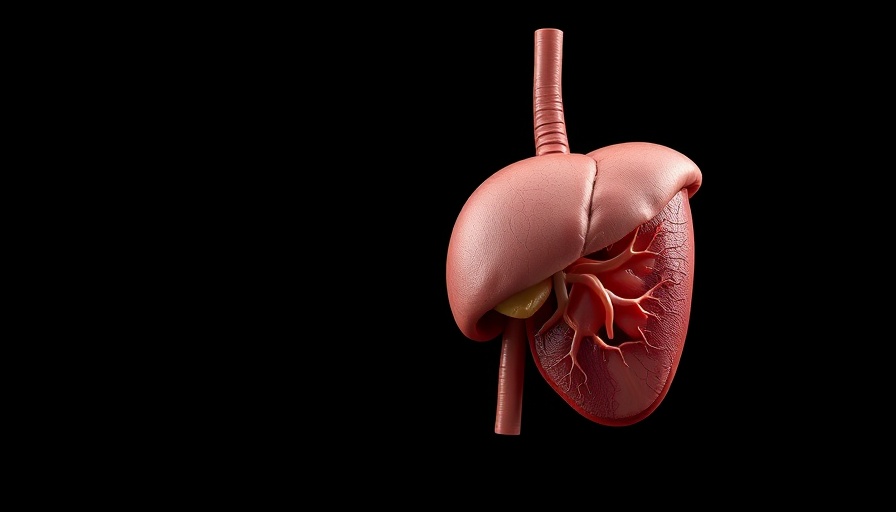
Recognizing the Warning Signs of Fatty Liver Disease
Fatty liver disease is a condition that can develop slowly over time, often without noticeable symptoms until it's quite serious. Understanding the signs early on is vital to ensuring effective management. If you or someone you know is at risk, here are six key indicators to watch for, as informed by the insights from the video, 6 Signs You May Have a Fatty Liver!
In 6 Signs You May Have a Fatty Liver!, the discussion dives into identifying critical indicators of liver health, inspiring deeper exploration of fatty liver disease management.
Persistent Fatigue: A Common Symptom
One of the primary symptoms of fatty liver disease is persistent fatigue. This fatigue results from the liver’s reduced ability to metabolize nutrients and generate energy efficiently. If you notice a significant decrease in your energy levels, especially if it persists despite adequate rest, it might be time to consult a healthcare provider.
Abdominal Discomfort: Pain as a Signal
Another sign is abdominal discomfort, particularly pain in the upper right quadrant where the liver is located. As the liver becomes enlarged and inflamed, this discomfort can lead to a feeling of fullness or pressure that isn’t normal. Paying attention to how your body feels can be a crucial first step in catching fatty liver early.
Unexplained Weight Loss: A Red Flag
Some individuals may experience unexplained weight loss as their liver struggles to function properly. The liver’s impaired capacity to process nutrients may not only affect your weight but can also bring on a decreased appetite. If you find yourself eating less without trying, it’s crucial to speak with a healthcare professional.
Jaundice: A Serious Indicator
Jaundice, which causes yellowing of the skin and eyes, is a notable sign of significant liver impairment. This occurs due to the buildup of bilirubin in the blood. If you observe yellowing, it’s essential to seek medical attention immediately, as this symptom suggests a serious condition requiring urgent care.
Elevated Liver Enzymes: Blood Test Results
Routine blood tests can reveal elevated levels of liver enzymes, indicating liver cell damage and inflammation. Regular check-ups are a great way to maintain health and catch potential issues before they escalate. Understanding your blood results can empower you to advocate for your health.
Swelling in the Abdomen or Legs: Fluid Retention
In advanced stages of liver disease, individuals may experience swelling in the abdomen (ascites) or legs (edema). This happens due to fluid retention, posing further health risks. If you notice unusual swelling, it’s important to connect it to potential liver issues with a healthcare provider.
Connecting Diet and Liver Health
Recognizing signs of fatty liver also means understanding its relationship with diet. Too much refined, processed sugar can lead to fat accumulation and inflammation in the liver. This connection puts emphasis on the importance of nutrition in managing your health. Making conscious choices about what you eat can not only impact your liver but your overall well-being.
Taking Action: Lifestyle Changes that Matter
With a greater understanding of fatty liver disease's signs, the next step is crucial: action. Focusing on wellness through nutrition, exercise, and stress management can radically impact liver health. Incorporating whole foods, reducing sugar intake, and maintaining a regular exercise regimen helps in reversing fatty liver disease. Often, simple changes in your daily routine can yield significant benefits.
Staying Motivated on Your Health Journey
On this health journey, motivation is key. Explore herbal remedies that support liver function, such as milk thistle and turmeric, which can provide natural healing benefits. Stay informed about your body, listen to the signs, and seek support when needed. You are not alone in this journey, and sharing your experiences with others can create a community of mutual encouragement and wellness.
Conclusion: Prioritize Your Liver Health
Recognizing the signs of fatty liver disease is the first step to ensuring a healthier future. By paying attention to your body’s signals and making informed choices, you can cultivate a lifestyle that promotes overall wellness. If any of these symptoms resonate with you, don’t hesitate to reach out to a healthcare provider. Remember, your liver is a vital organ that deserves your care.
For more tips on enhancing your health journey, pay attention to your nutrition, exercise regularly, and find holistic ways to manage stress. Taking these proactive steps can lead to improved liver health and overall well-being.
 Add Row
Add Row  Add
Add 




Write A Comment